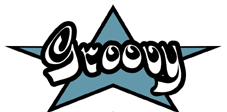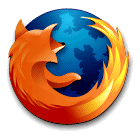 One of today’s post at Slashdot asks an interesting question: should touch typing be taught in schools as mandatory subject?
One of today’s post at Slashdot asks an interesting question: should touch typing be taught in schools as mandatory subject?
This is one of those questions where I have the side which I am almost fanatical about. Yes!
Until recently, seeing a computer guy not using all 10 fingers to type made me all made and crippled inside. Especially programmers. Especially in our office. It is as unprofessional as it can get. Touch typing is the most basic computer skill. If you don’t have it, what kind of programmer are you? I have real problem with respect towards computer programmers who cannot touch type. But, as I mentioned, until recently, I felt so strongly only about computer professionals. Since some time now, I start to get the same feeling towards any computer user.
Don’t you hate it when people who driving around don’t look in the mirrors, or turn their head to make sure the path is secure, or don’t show turn indicators when maneuvering? It’s pretty ugly when regular cars behave this way. But when professional drivers (taxi cabs, buses, police) do the same it is even worse.
After all, touch typing is not that difficult to learn. It takes only about a week or two. During this time you learn to use fingers properly and you get used to the idea. After two weeks you are pretty much touch typing. The speed is horrible, but you are on the right way. Just keep your fingers at place and your speed will increase dramatically with practice. There are also tons of ways to learn touch typing. You can take a course in almost any school or college. You can get a book and study it by yourself. You can use a program. You can learn it for free or you can pay for you studies. You can learn it anyway you like. But “Just Do It” © Nike.
Even if you are fast typer with your 4 and half fingers, you will be amazed how faster you will get after learning touch typing. If you think that you don’t need to type that much, you’ll be surprised how many more things are typable. Unless you are touch typing you are avoiding (consciously or unconsciously) a lot of text. It is similar to fork and knife usage in some way. If you are in the restaurant with someone taking notice on your manners (business meeting, date, or whatever) and you don’t know how to use knife and fork properly, you will avoid ordering food that comes in large pieces. Like stakes. Why should you? Learn the damn thing and get over with it. It will save you more than two weeks during the next year only.
If you need an example – I spent less than 5 minutes on this post, while not being an extremely fast typer myself. Learn it!

 By means of
By means of 
 One of
One of  There are still a lot of people who use Microsoft Internet Explorer. If you are trying to convince them to give
There are still a lot of people who use Microsoft Internet Explorer. If you are trying to convince them to give